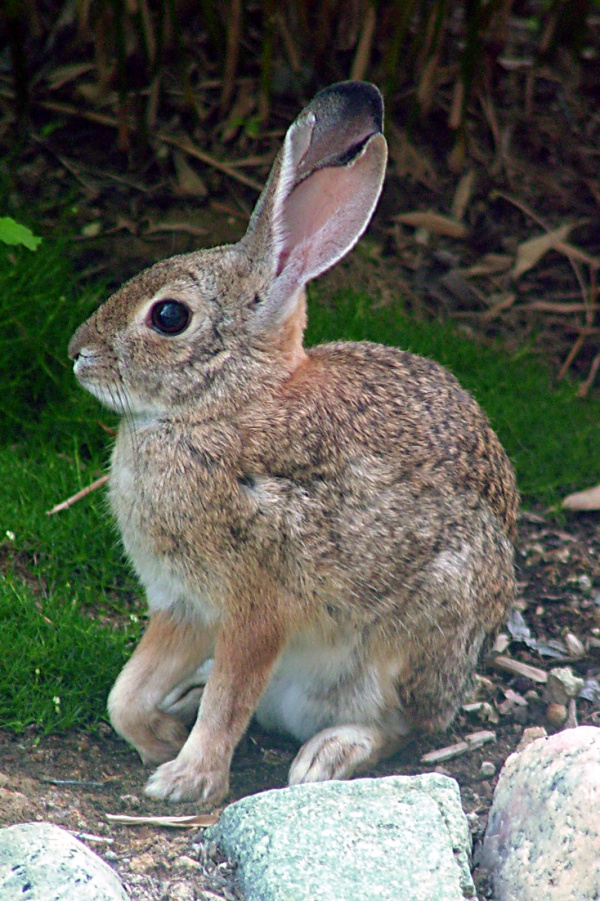Facts About Desert cottontail
The desert cottontail, also known as Audubon's cottontail, is a species of rabbit found in the New World and a member of the Leporidae family. Unlike their European counterparts, desert cottontails do not live in communal burrow systems, although they are tolerant of neighboring individuals. They give birth in burrows and are most active during the early morning and evening hours. Their primary defense mechanism against predators is their acute hearing, which is less effective on windy days.
These rabbits typically live for less than two years due to their high number of predators. While they bear a resemblance to European rabbits, desert cottontails have larger ears and a distinctive tail. They are commonly found in the Western United States and parts of Mexico, thriving in dry grasslands and areas near rivers.
Desert cottontails primarily consume forbs and grasses, obtaining most of their water from the plants they eat. They have a unique method of maximizing nutrient absorption from their food through re-ingestion of their feces, a process known as coprophagy. To regulate their body temperature in hot environments, they utilize shaded areas and pant to stay cool.
These rabbits face numerous predators, including birds of prey, coyotes, snakes, and humans. Their population is also impacted by habitat loss, competition with other species such as black-tailed jackrabbits, and climatic changes. Although they are not currently considered at risk, they remain common throughout their range, rendering extensive conservation efforts unnecessary at present.

 Canada
Canada